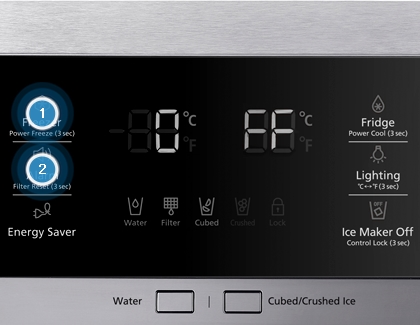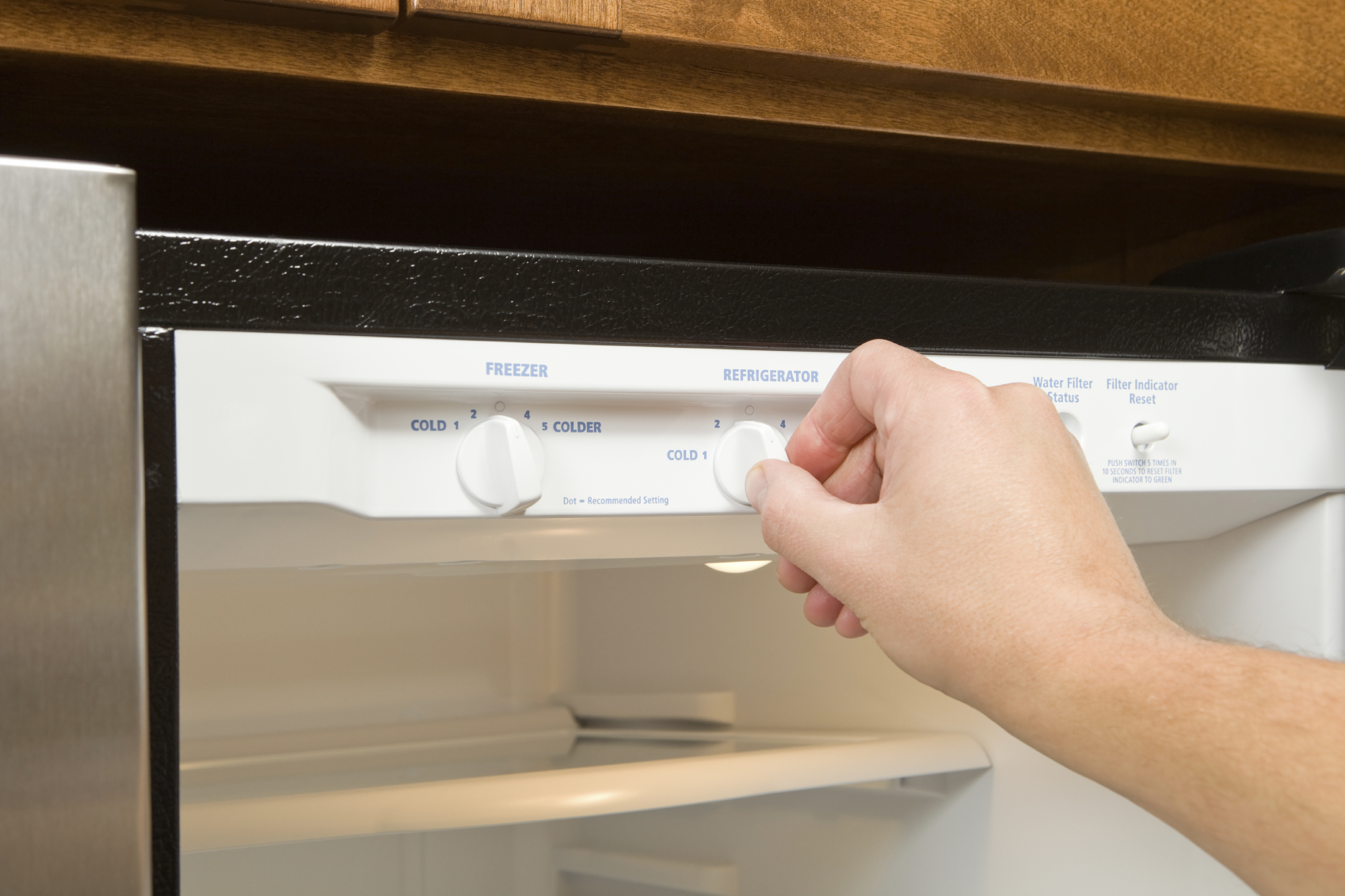To turn off a refrigerator, locate the power button or unplug it from the outlet. Refrigerators should be turned off for maintenance or extended periods of non-use.
Properly shutting down a refrigerator can help save energy and prevent potential damage. Refrigerators play a crucial role in keeping food fresh and safe. Turning off a refrigerator when not in use can help reduce electricity consumption and lower utility bills.
Additionally, regular maintenance and cleaning are essential for ensuring the efficiency and longevity of the refrigerator. By following these steps, you can effectively turn off your refrigerator and promote energy conservation.
Preparing To Turn Off The Refrigerator
Before shutting down your refrigerator, it’s essential to go through a few crucial steps to ensure a smooth process that keeps your appliance and food in good condition. By following these steps, you can minimize food spoilage and prevent any potential issues when it’s time to turn the refrigerator back on.
Cleaning Out The Refrigerator
Thoroughly cleaning your refrigerator before turning it off is essential to prevent odors and the growth of mold or bacteria. Dispose of any spilled or expired food items. Wipe down shelves, drawers, and walls with a mixture of warm water and vinegar to remove any lingering odors or stains.
Removing Food And Drinks
Prior to shutting down the refrigerator, make sure to remove all food and drinks from the appliance. Take inventory of what’s inside and plan your meals accordingly to minimize waste. Use coolers or insulated bags to store perishable items during the shutdown period to maintain their freshness.
Disconnecting The Power Source
Unplug the refrigerator from the power outlet to ensure it is disconnected from the electrical supply. If applicable, carefully turn off the ice maker and remove any ice from the ice bin. Additionally, if there’s a water supply line connected, consider turning off the water valve to prevent any potential leaks during the shutdown.

Credit: www.samsung.com
Steps To Turn Off The Refrigerator
To properly turn off your refrigerator, it’s important to follow specific steps. Here is a clear guide on how to accomplish this task:
Locating The Temperature Control
Find the temperature control dial inside your refrigerator. It is usually located in the freezer compartment or on the refrigerator’s interior wall.
Adjusting The Temperature Control
To adjust the temperature, turn the dial to the “Off” position or to the lowest setting. This will help in gradually shutting down the cooling process.
Turning Off The Power
Locate the power cord attached to your refrigerator. Unplug it from the electrical outlet to ensure that the appliance is completely powered off.
Taking Care Of The Refrigerator While Turned Off
To properly turn off your refrigerator, make sure to clean and empty it, unplug the power cord, and leave the door slightly open to prevent odors.
Cleaning The Interior
Taking Care of the Refrigerator while Turned Off is crucial for its longevity. Cleaning the interior regularly helps prevent odors and bacteria buildup.Keeping The Door Open
Keeping the door open when the refrigerator is turned off prevents mold growth and allows air circulation.Monitoring For Any Issues
Regularly monitoring for any issues such as leaks or strange odor can prevent potential damages.Tips For Prolonged Refrigerator Shutdown
If you’re planning to shut down your refrigerator for an extended period, there are several essential tips to follow in order to ensure its proper maintenance and longevity. Prolonged refrigerator shutdown requires specific measures to safeguard the appliance from damage and to prevent the growth of mold and odors. In this section, we will discuss three important steps for prolonged refrigerator shutdown, including cleaning the condenser coil, placing moisture absorbers, and regularly inspecting and maintaining the appliance to ensure it remains in good condition.
Removing And Cleaning The Condenser Coil
One crucial step in preparing your refrigerator for shutdown is to remove and clean the condenser coil. These coils are responsible for removing heat from the appliance, and when they become dirty or clogged, they can strain the compressor and cause it to overheat. Thoroughly vacuuming and wiping down the condenser coils will help to maintain the efficiency of your refrigerator and prevent potential issues upon restarting. Regular cleaning of these coils is essential for the overall performance of your refrigerator.
Placing Moisture Absorbers
Moisture absorbers such as silica gel packets or activated charcoal can help to prevent moisture buildup inside your refrigerator during prolonged shutdown. Placing these absorbers inside the unit will minimize the risk of mold and mildew growth, as well as the development of unpleasant odors. Ensuring a dry interior environment will safeguard the longevity of your refrigerator and preserve its overall condition. Remember to check and replace these absorbers as needed to maintain their effectiveness.
Regularly Inspecting And Maintaining
Regular inspection and maintenance of your refrigerator, even during periods of shutdown, are critical for preserving its functionality. Check the door seals for any signs of wear and tear, and ensure they remain airtight to prevent any compromising of the interior environment. Additionally, clean the interior of the refrigerator and freezer, removing any food items that could spoil and lead to unpleasant odors. Performing these routine checks and maintenance tasks will help to ensure that your refrigerator remains in optimal condition for future use.
Turning The Refrigerator Back On
To turn off the refrigerator, locate the power switch or unplug the unit from the electrical outlet. After waiting for a few minutes, plug the refrigerator back in, and ensure the power switch is turned on. Wait for the refrigerator to start running again and listen for the compressor to kick in before returning the items to the refrigerator.
Reconnecting The Power
Now that you have successfully turned off your refrigerator, you may be wondering how to turn it back on. To start the process, you will need to reconnect the power. This can be done by plugging in the refrigerator’s power cord into a functioning electrical outlet. Ensure that the outlet is compatible with the refrigerator’s voltage requirements. Take care to handle the cord with caution, avoiding any twists or kinks that may damage the cord or present a safety hazard.Setting The Temperature
Once you have reconnected the power to your refrigerator, the next step is to set the temperature. This is vital as it ensures the proper cooling and preservation of your food. Locate the temperature control dial, which is typically located inside the refrigerator. It may be a dial or a digital display panel, depending on the model. Turn the dial to the desired temperature setting. A commonly recommended temperature range for refrigerators is between 37 and 40 degrees Fahrenheit (or 3 to 4 degrees Celsius). However, refer to your refrigerator’s user manual for the specific temperature recommendations for your appliance. Remember, setting the temperature too high may result in spoiled food, while setting it too low can lead to energy wastage and frozen items.Restocking The Refrigerator
With the power reconnected and the temperature set, it is time to restock the refrigerator. Begin by transferring your food items from any temporary storage containers back into their rightful places within the refrigerator. Take the opportunity to check each item for signs of spoilage or expiration dates and discard any that are outdated or no longer safe to consume. As you restock, ensure that you arrange your items in an organized manner, making it easier to locate and access them when needed. If needed, use appropriate storage containers to maximize the space within your refrigerator and maintain a clean and hygienic environment. Now that you know how to turn your refrigerator back on, follow these simple steps to reconnect the power, set the temperature, and restock the refrigerator. By doing so, you can ensure your refrigerator continues to function optimally, keeping your food fresh and your kitchen running smoothly.Credit: www.quora.com

Credit: www.samsung.com
Frequently Asked Questions For How To Turn Off Refrigerator
How Do You Properly Turn Off A Refrigerator?
To properly turn off a refrigerator, find the temperature control dial and set it to “Off. ” Unplug the refrigerator from the power outlet, and clean the interior before leaving the door slightly open to prevent mold growth.
Can Fridge Be Switched Off?
Yes, a fridge can be switched off when not in use to save energy and lower electricity costs.
Do Refrigerators Have On Off Switches?
Yes, most refrigerators have on/off switches typically located inside the fridge or on the control panel.
How Long Can A Fridge Be Turned Off?
A fridge can be turned off for a few hours but it’s not recommended for longer periods. Turning off a fridge can cause food spoilage and damage to the appliance. It’s best to keep it running unless absolutely necessary.
Conclusion
Turning off your refrigerator is a simple task that can help you save energy and money. By following the steps outlined in this guide, you can ensure that your refrigerator is properly turned off when not in use. Remember to unplug the refrigerator and clean it before turning it off.
Regular maintenance is key to keeping your refrigerator in top condition.


